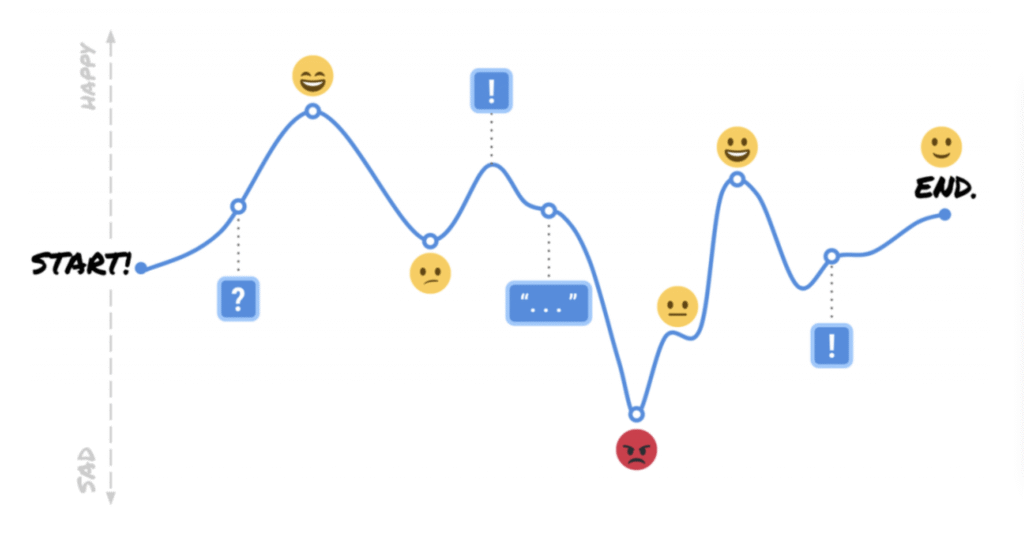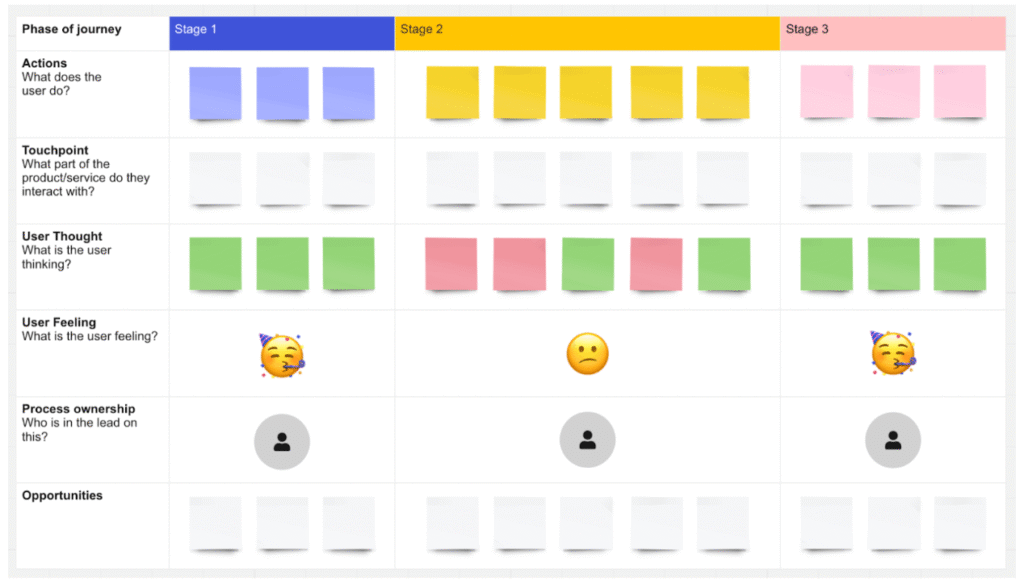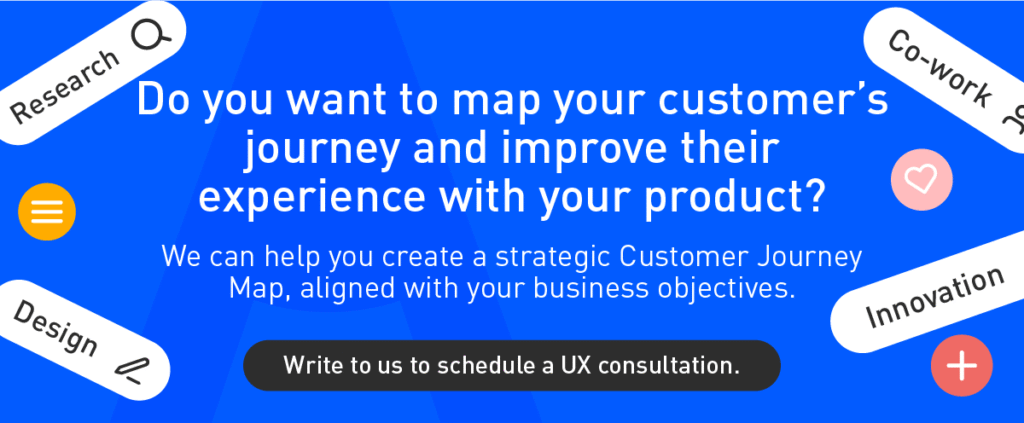Are you designing what your client really needs?
Creating products without understanding your user is like shooting an arrow blindfolded. Today, with accessible and intuitive tools, it’s easier than ever to develop digital services. But a key question remains:
Are we designing truly useful, seamless, and memorable experiences for our users? This is where the Customer Journey Map (CJM) comes in a strategic tool for designing user-centered experiences.
What is a Customer Journey Map?
A Customer Journey Map is a visual and structured representation of the journey a customer takes when interacting with a brand, product, or service.
This map not only describes actions but also the user’s thoughts, emotions, motivations, and frustrations at each stage of the process.
It is a fundamental tool within methodologies such as Design Thinking, UX Research, and Customer Experience (CX), as it offers a holistic view of the customer journey.

Why is mapping the customer journey so important today?
Customers don’t interact with a product in a linear fashion: they interact across multiple omnichannel channels, including social media, apps, email, websites, and customer service.
The Customer Journey Map allows you to:
- Identify friction points and opportunities in the conversion funnel.
- Improve the experience through empathy and a user perspective.
- Align design, marketing, product, and support teams.
- Validate the value proposition before investing in development.
Key elements of a Customer Journey Map
A well-constructed CJM should include the following components:
User Persona
A semi-fictional representation of the ideal user, based on qualitative and quantitative research. It is often complemented by an empathy map.
User objective
What do you want to achieve with your interaction? For example, playing a movie on a streaming platform.
Stages of the journey
Phases of the journey: discover, consider, decide, use, retain.
Actions/Tasks
User behaviors at each stage, such as browsing, searching, purchasing, or abandoning.
Touchpoints
Channels where the user interacts with your brand: website, mobile app, chatbot, email, etc.
Thoughts
Ideas, doubts or beliefs that the user has at each stage of the process.
Emotions
Emotional states associated with travel: enthusiasm, frustration, anxiety, satisfaction.
Pain points
Barriers or difficulties that generate friction, abandonment or discomfort during the experience.
Opportunities
Soluciones posibles que puedes implementar para mejorar la experiencia del cliente.

Tools to create your Customer Journey Map
These platforms allow you to visually map the customer experience and collaborate in real time with your team:
- FigJam (Figma)
- Miro
- Lucidchart
- UXPressia
- Smaply
How does it relate to other UX tools?
The CJM doesn’t operate in isolation. It integrates and complements other UX methodologies and tools, such as:
- Empathy Map
- Service Blueprint
- Wireframes and Prototypes

What to do after building your Customer Journey Map?
A CJM isn’t a decorative document. It’s a strategic guide for action. We recommend:
Prioritize pain points
Focus on solving the most critical or frequent problems first.
Connecting problems with solutions
For example, if the user gets lost in the navigation, you can add filters or redesign the information architecture.
Share the map with all teams
Each area (UX, development, support, marketing) can contribute ideas from their perspective to enrich the map.
Iterate, measure, and update
Conduct usability tests, measure the impact of changes, and update the CJM based on new data.
Common mistakes when creating a Customer Journey Map
Avoid these common mistakes:
- Relying on assumptions rather than real data.
- Not including all relevant channels.
- Treating it as a static, unupdated deliverable.
Conclusion: Design with empathy and make data-driven decisions
The Customer Journey Map is a fundamental tool for understanding your user, aligning teams, and making evidence-based decisions.
It allows you to visualize the experience holistically, identify critical points, and generate concrete actions that improve conversion and loyalty.
In a competitive digital environment, understanding your customer is not optional: it’s what differentiates brands that connect from those that merely communicate.